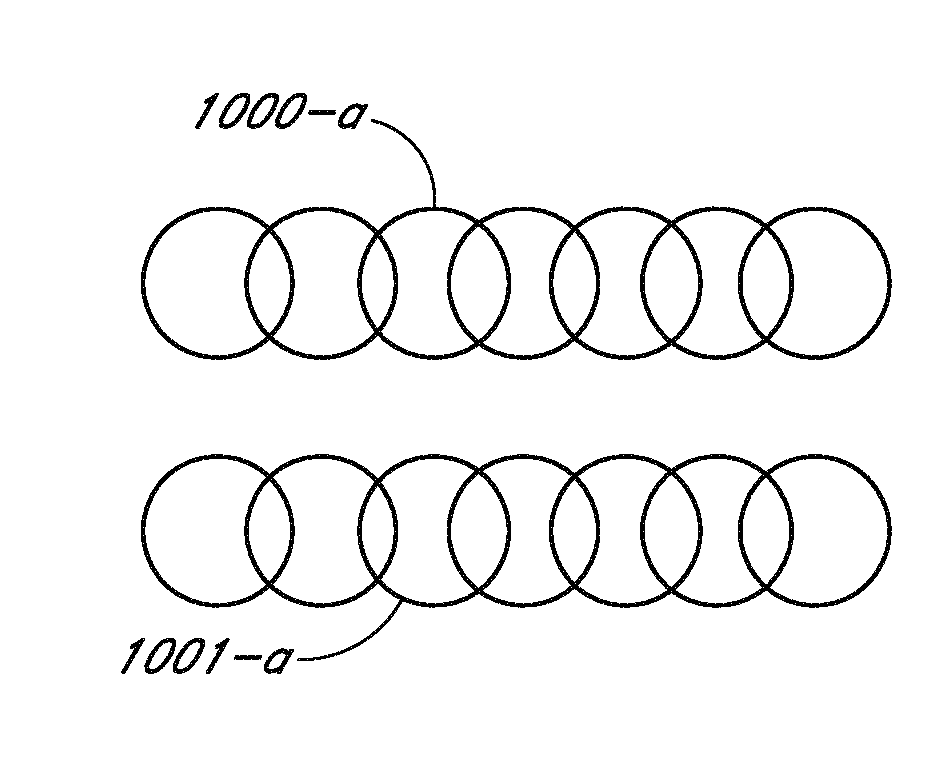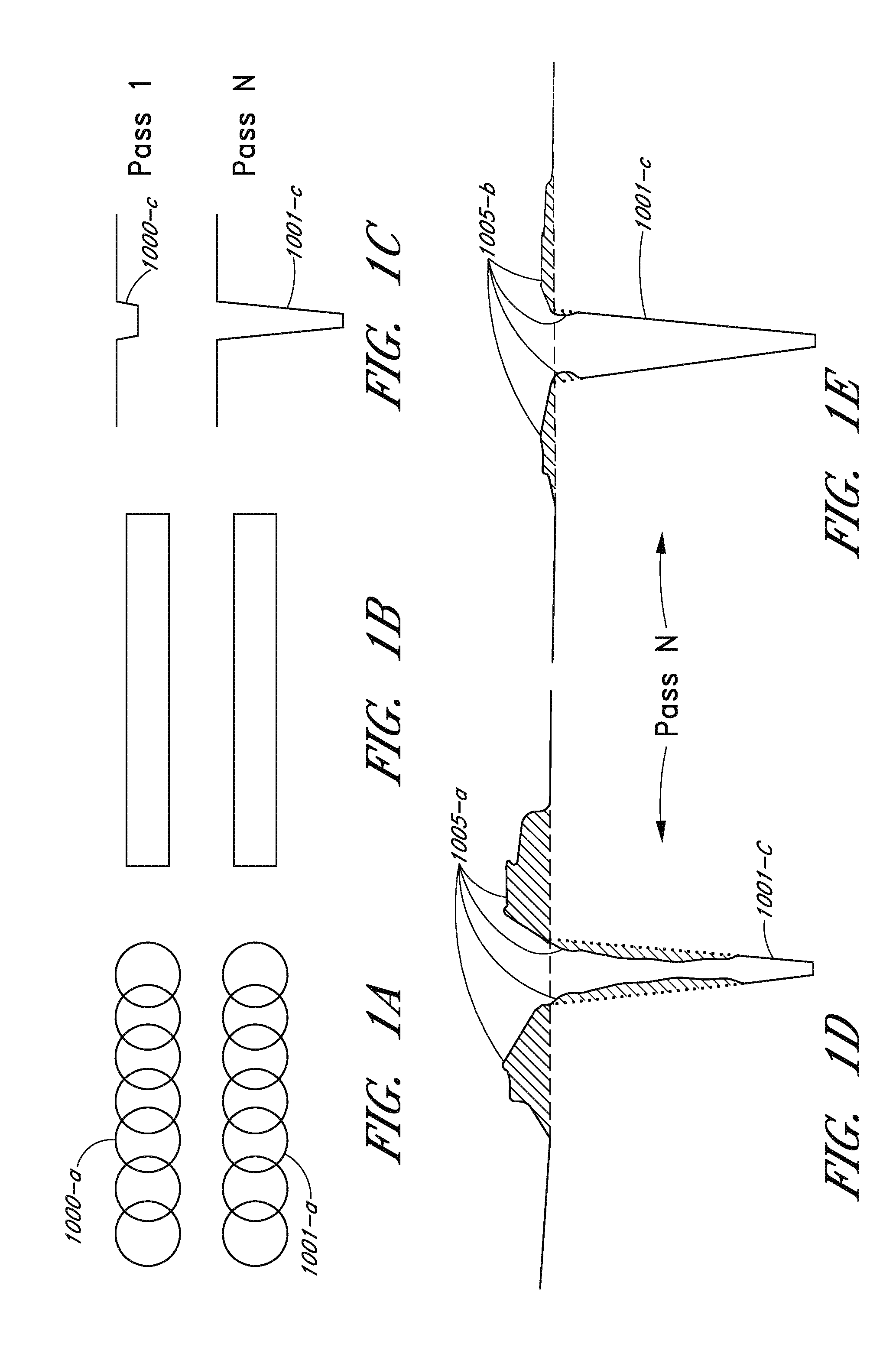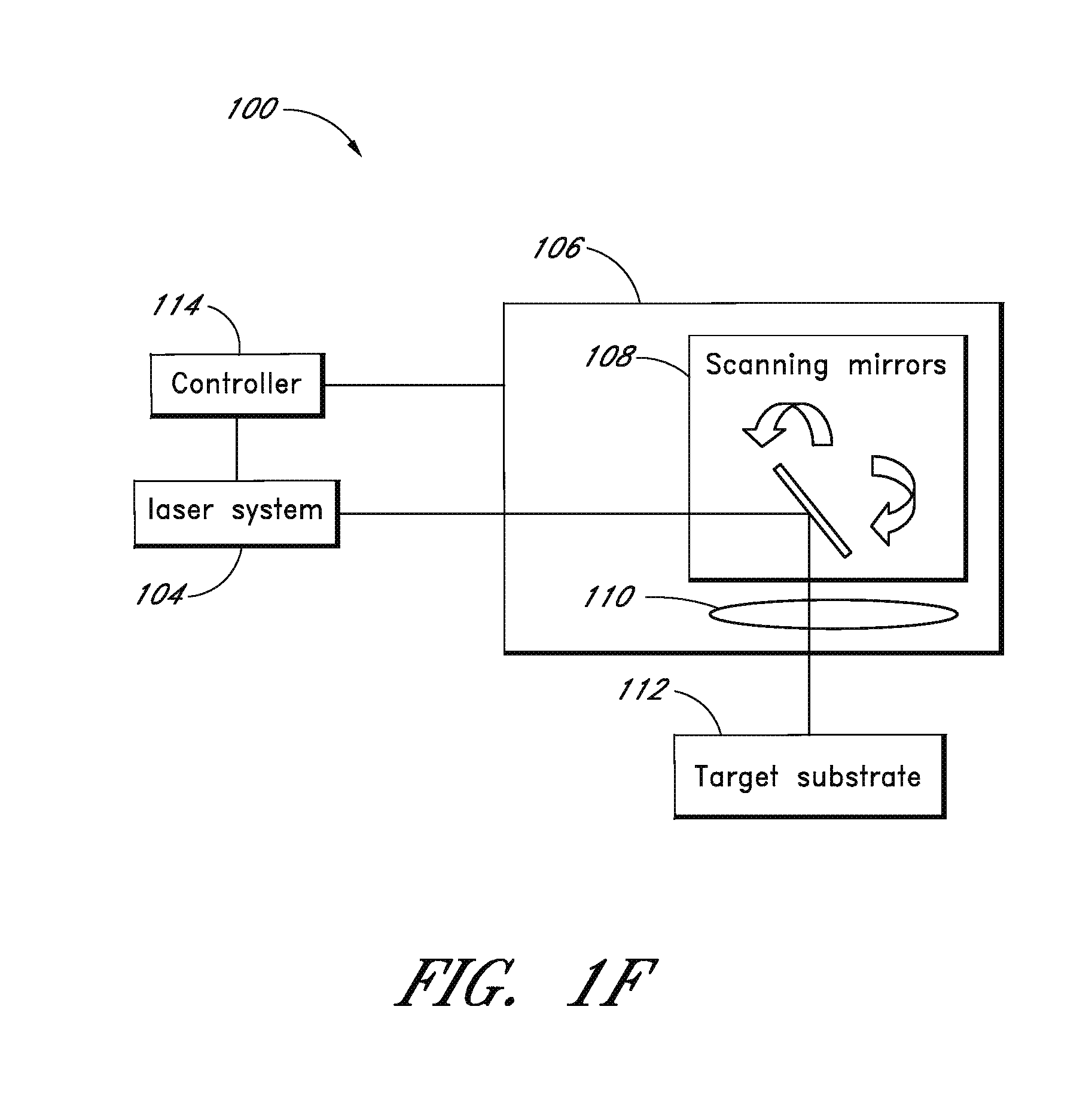Laser-based material processing apparatus and methods
a material processing and laser technology, applied in glass making apparatus, manufacturing tools, welding/soldering/cutting articles, etc., can solve the problems of significant drawbacks, and difficult to meet the requirements of various pcb designs, so as to improve processing throughput and/or quality, reduce processing costs, and reduce processing costs
- Summary
- Abstract
- Description
- Claims
- Application Information
AI Technical Summary
Benefits of technology
Problems solved by technology
Method used
Image
Examples
examples and embodiments
Overview of Examples and Embodiments
[0117]As discussed above, Applicants have recognized that a need exists for laser-based processing to scribe, dice, cut, or other processing to remove material from a region of a composite material workpiece, so as to produce relatively narrow kerfs and relatively clean cuts with reduced thermal effects, while maintaining high throughput.
[0118]Embodiments of systems and methods disclosed herein are generally applicable for laser processing a workpiece, and particularly for micromachining applications. The workpiece may comprise a composite material. The workpiece may comprise a PCB. For example, various embodiments are applicable to cutting, dicing, scribing, and / or engraving composite materials to form features having a typical lateral dimension in a range from about 1 micron to about 100 microns and a depth from about a few microns to hundreds of microns. In some embodiments, the depth of the feature (e.g., a cut) may be equal to the thickness o...
embodiments and examples
VARIOUS EMBODIMENTS AND EXAMPLES
[0211]In another general aspect, a method of laser processing a composite material workpiece includes irradiating at least one material of the composite material workpiece with laser pulses having a pulse width. The laser pulses may be focused onto spots in the at least one material. The method includes moving the focused spots relative to the composite material at a relative speed. In some implementations, the workpiece comprises a patterned region and a composite material region. The patterned region may include electronic circuits comprising dielectric and / or metal materials. In some embodiments, the relative speed of the laser spot used for removal of at least a portion of the patterned region is substantially less than the relative speed used for removal of at least a portion of the composite material.
[0212]In some embodiments, an overlap between adjacent focused spots is substantially greater for irradiation of the patterned region than for irra...
example experimental
Results
[0225]Cutting Example with Ultrashort Pulses in Comparison with ns Pulses
[0226]Experiments were carried out to compare cutting results obtained with ultrashort pulses and nanosecond pulses. The system configuration used was similar to the system schematically illustrated in FIG. 6A. In these experiments, the laser system 104 comprised a D-10K laser to provide ultrashort pulses and comprises a fiber-based ns laser unit to provide ns pulses; both lasers are made by IMRA America Inc. (Ann Arbor, Mich.).
[0227]The experimental arrangement is schematically illustrated in FIG. 6A. For the ultrashort pulse experiments, laser system 104 provided more than 10 μJ of available pulse energy, pulse widths in a range from about 500 fs to about 500 ps, and a repetition rate exceeding 100 kHz. The laser parameters of the experimental system were varied, although not necessarily all the parameters were independent of each other. For example, pulse energy influences the minimum achievable pulse...
PUM
| Property | Measurement | Unit |
|---|---|---|
| wavelength | aaaaa | aaaaa |
| wavelength | aaaaa | aaaaa |
| wavelength | aaaaa | aaaaa |
Abstract
Description
Claims
Application Information
 Login to View More
Login to View More - R&D
- Intellectual Property
- Life Sciences
- Materials
- Tech Scout
- Unparalleled Data Quality
- Higher Quality Content
- 60% Fewer Hallucinations
Browse by: Latest US Patents, China's latest patents, Technical Efficacy Thesaurus, Application Domain, Technology Topic, Popular Technical Reports.
© 2025 PatSnap. All rights reserved.Legal|Privacy policy|Modern Slavery Act Transparency Statement|Sitemap|About US| Contact US: help@patsnap.com



